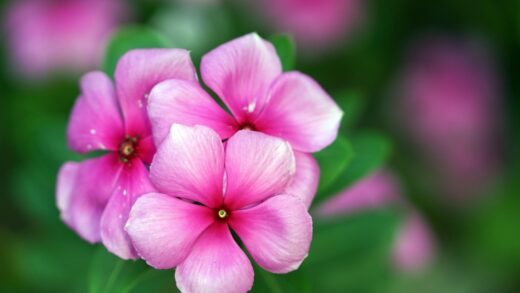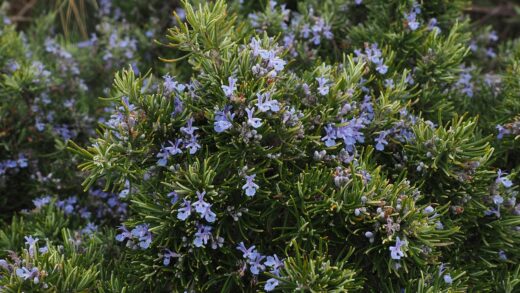Blue oat grass is classified as a cool-season grass, and it possesses a commendable degree of cold hardiness, making it suitable for a wide range of climates. Generally, it is reliably hardy in USDA zones 4 through 8, capable of withstanding winter temperatures that dip well below freezing. The plant’s foliage is considered semi-evergreen, meaning that in the warmer end of its hardiness range (zones 7-8), it may retain much of its blue-gray color throughout the winter, providing valuable structure and interest in the dormant garden. In colder regions (zones 4-6), the foliage will typically turn a tawny, straw-like color after repeated hard frosts but will remain standing, offering a different kind of winter beauty.
The key to successful overwintering, particularly in colder or wetter climates, is not just about the plant’s tolerance to low temperatures, but its intolerance of cold, wet soil. The combination of freezing temperatures and waterlogged soil is the most significant threat to the survival of blue oat grass. During winter dormancy, the plant’s metabolic processes slow down, and it is unable to effectively use excess water, making its crown and roots highly susceptible to rot. This underscores, once again, the paramount importance of ensuring the planting site has impeccable drainage.
Preparing the plant for winter is a relatively simple process that involves just a few key considerations. One of the most important decisions is what to do with the previous season’s foliage. Unlike many herbaceous perennials, it is generally recommended to leave the foliage of blue oat grass standing throughout the winter. This old foliage provides a natural layer of insulation for the plant’s crown, which is the vital point from which new growth will emerge in the spring.
The standing foliage also contributes significantly to the winter landscape. The dried blades can catch the frost and snow in beautiful ways, adding texture and form to an otherwise bare garden bed. This visual contribution, combined with the practical benefit of crown protection, makes a compelling case for delaying the annual cleanup until late winter or early spring. By allowing the plant to go into winter intact, you are both enhancing your garden’s aesthetic and protecting your plant.
Assessing hardiness and climate zones
Understanding the hardiness of blue oat grass in the context of your specific climate is the first step in successful winter care. Plant hardiness zones, such as those developed by the USDA, provide a valuable guideline by indicating the average annual minimum winter temperature for a given area. Blue oat grass is typically rated for zones 4 to 8, which means it can survive winter temperatures as low as -34°C (-30°F) at the cold end of its range. This wide range of adaptability makes it a versatile choice for many different gardens.
More articles on this topic
While hardiness zones are a useful starting point, they do not tell the whole story. Microclimates within your own garden can also play a significant role. A spot that is sheltered from harsh winter winds, or one that is located near a south-facing wall, may be effectively a half-zone warmer than a more exposed area of your property. Conversely, a low-lying spot where cold air settles may be colder. Considering these microclimates can help you choose the best possible location for your plant to thrive through the winter.
Another critical factor that interacts with temperature is the amount and type of winter precipitation. A garden in a cold but dry winter climate presents a different set of challenges than one in a climate that is cold and wet. Blue oat grass will generally perform much better in the former. In regions with heavy winter rain or snow that repeatedly melts and refreezes, the risk of crown rot is significantly higher. In these wetter climates, providing exceptionally sharp drainage is not just recommended, it is absolutely essential for the plant’s survival.
If you are gardening at the very edge of the plant’s hardiness range, such as in zone 4, you may want to take extra precautions to ensure its survival. This could include selecting a more protected microclimate for planting or providing a winter mulch after the ground has frozen. However, for most gardeners living within its recommended zones, blue oat grass should overwinter reliably without any extraordinary measures, provided it is planted in well-draining soil.
Preparing the plant for dormancy
As autumn progresses and temperatures begin to drop, blue oat grass will naturally start to slow its growth and prepare for winter dormancy. Your role during this transition is to ensure the plant enters its dormant period in a healthy state. One of the most important steps is to adjust your watering schedule. As the weather cools and rainfall often increases, you should cease all supplemental irrigation. The plant’s water needs are very low during this time, and adding extra water will only increase the risk of creating the cold, wet soil conditions it abhors.
More articles on this topic
It is also important to refrain from any pruning or cutting back of the foliage in the autumn. The standing leaves, even after they have been bleached by frost, serve a vital purpose. They act as a natural blanket, protecting the sensitive crown of the plant from the harshest winter temperatures and desiccating winds. Cutting the plant back in the fall would expose the crown, leaving it vulnerable to damage. The annual cleanup should be postponed until the very end of winter or the beginning of spring.
Similarly, you should avoid fertilizing the plant in the late summer or autumn. Applying fertilizer late in the season can encourage a flush of new, tender growth that will not have sufficient time to mature and “harden off” before the first hard frosts arrive. This new growth is extremely susceptible to being killed by the cold, which can weaken the overall plant and waste its energy reserves just before it needs them most for winter survival. All feeding should be restricted to the spring, if it is necessary at all.
By taking these simple preparatory steps—reducing water, leaving the foliage intact, and avoiding late-season fertilization—you are working in harmony with the plant’s natural cycle. You are allowing it to enter its dormant phase gradually and in a strong, resilient condition. This simple, hands-off approach to autumn care is the most effective way to ensure your blue oat grass weathers the winter successfully and is ready for vigorous growth when spring returns.
The role of winter mulch
The topic of winter mulching for blue oat grass can be a source of some confusion, as the wrong type of mulch or improper application can do more harm than good. The primary purpose of a winter mulch in colder climates is not to keep the plant warm, but rather to insulate the soil and keep it frozen. This helps to prevent the damaging freeze-thaw cycles that can heave plants out of the ground and damage their roots. However, for a plant like blue oat grass that is highly susceptible to rot, the choice and application of mulch must be done with great care.
If you decide to apply a winter mulch, it is crucial to wait until after the ground has frozen solid. Applying mulch too early, while the ground is still warm, can trap heat and moisture, which can delay the plant’s dormancy and potentially encourage rot. The mulch should be applied after the first hard freeze of the season. The best materials for mulching blue oat grass are those that are light and airy and will not become compacted and waterlogged over the winter. Shredded leaves, pine needles, or straw are good options.
When applying the mulch, it is absolutely critical to keep it away from the crown of the plant. Pile the mulch around the base of the plant, but leave a “donut hole” of clear space immediately around the stems. This ensures that air can still circulate around the crown and prevents moisture from being trapped against the base of the plant, which is the most common cause of winter rot. A layer of mulch about 5 to 10 centimeters thick is generally sufficient.
In many cases, especially for established plants within their normal hardiness range, a winter mulch may not be necessary at all. The plant’s own dormant foliage provides a good deal of natural insulation for the crown. Furthermore, if you are located in a region with reliable snow cover, the snow itself acts as an excellent natural insulator. Many gardeners find that as long as the plant is in well-draining soil, it can overwinter successfully without any additional mulch.
Spring care after winter
As winter begins to wane and the first signs of spring appear, it is time to perform the annual cleanup that was postponed in the autumn. The timing for this task is important. You should wait until the harshest cold of winter has passed, but ideally perform the cutback before a significant amount of new growth has emerged from the base of the plant. Cutting too late risks snipping off the tips of the new blue shoots, while cutting too early can leave the crown exposed to a late-season cold snap. Late winter or very early spring is the target window.
The method of cleanup depends on the condition of the plant. In milder climates where the foliage remains largely evergreen, you may only need to tidy up the plant by “combing” through it with your fingers (wearing gloves) or a small rake. This will remove the dead, straw-colored leaves while leaving the healthier foliage intact. This gentle approach is often enough to refresh the plant’s appearance and make way for new growth.
In colder climates, where the entire clump has been bleached by winter, a harder pruning is usually in order. Using a pair of sharp shears or hedge trimmers, cut the entire clump of old foliage back to a height of about 8 to 10 centimeters from the ground. This may seem severe, but it is the most effective way to rejuvenate the plant. It removes all of the dead and damaged material in one go, allowing the vibrant new growth to emerge unimpeded and form a perfect, fresh mound.
After the spring cleanup, gently rake away any accumulated winter debris from around the base of the plant. This is also the time to remove any winter mulch that was applied. As the soil warms and the days lengthen, you will soon be rewarded with the sight of new, intensely blue shoots emerging from the crown. This annual cycle of winter dormancy followed by a spring renewal is what keeps the blue oat grass looking its best year after year.
📷: Drew Avery, CC BY 2.0, via Wikimedia Commons


















